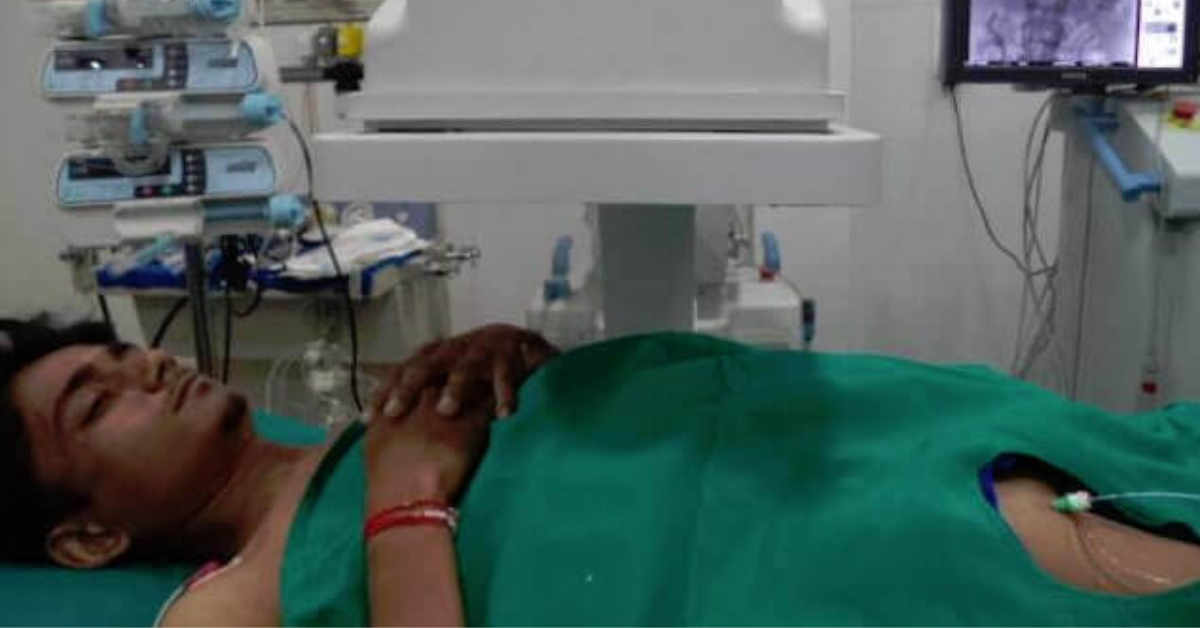Stem Cell Treatment India: Revolutionizing Regenerative Healthcare
Stem Cell Treatment India is at the forefront of modern medical science, offering revolutionary treatments for diseases once considered incurable. By using the body’s own regenerative potential, stem cells can repair or replace damaged tissues, manage chronic diseases, and improve quality of life. India has emerged as a global destination for cutting-edge stem cell treatment, combining advanced medical technology with affordability and skilled expertise.
What Are Stem Cells?
Stem cells are undifferentiated cells with the unique ability to develop into various specialized cell types such as muscle cells, nerve cells, or liver cells. They also possess self-renewal capabilities, which means they can multiply and maintain a healthy pool of cells in the body.
There are several types of stem cells used in therapy:
-
Embryonic Stem Cells (ESCs) – Pluripotent cells derived from embryos.
-
Adult Stem Cells – Found in tissues like bone marrow or adipose fat.
-
Mesenchymal Stem Cells (MSCs) – Multipotent cells found in umbilical cord tissue, bone marrow, and fat, widely used in regenerative treatments.
-
Induced Pluripotent Stem Cells (iPSCs) – Genetically reprogrammed cells that mimic embryonic stem cells.
Why Stem Cell Therapy?
Stem cell therapy is particularly effective in cases where conventional medicine falls short. It has shown promise in treating:
-
Neurological Disorders – Parkinson’s disease, spinal cord injuries, stroke recovery, multiple sclerosis
-
Orthopedic Conditions – Osteoarthritis, tendon injuries, bone regeneration
-
Autoimmune Diseases – Rheumatoid arthritis, lupus
-
Cardiac Conditions – Post-heart attack cardiac repair
-
Liver & Kidney Diseases – Cirrhosis, chronic kidney disease
-
Diabetes – Type 1 and 2 with beta-cell regeneration
-
Aesthetic and Anti-aging Treatments – Skin rejuvenation, hair restoration
Stem Cell Treatment in India: A Leading Global Destination
India is rapidly gaining recognition as one of the world’s premier destinations for stem cell therapy. Several factors contribute to this:
1. World-Class Medical Infrastructure
Indian hospitals and regenerative medicine centers are equipped with state-of-the-art technology and internationally accredited labs. Many of these centers are approved by organizations like NABH, ISO, and follow GMP-certified stem cell processing protocols.
2. Experienced Specialists
India boasts a large pool of highly qualified doctors, regenerative medicine experts, and stem cell researchers with training from prestigious international institutions. Many clinics are also engaged in clinical trials and research publications in peer-reviewed journals.
3. Cost-Effective Treatment
The cost of stem cell therapy in India is significantly lower than in the US, UK, or Europe—without compromising on quality. Patients can save up to 60–80% on treatment and travel costs, making India an attractive option for medical tourists.
4. Comprehensive Treatment Plans
Reputable Indian centers offer end-to-end services including:
-
Diagnosis and consultation
-
Customized treatment planning
-
Cell harvesting, processing, and transplantation
-
Rehabilitation and aftercare
-
Long-term follow-up monitoring
How Stem Cell Treatment Works
Step 1: Patient Evaluation
Doctors conduct detailed assessments including blood tests, imaging (MRI, CT, PET), and medical history to determine eligibility and customize the therapy plan.
Step 2: Stem Cell Harvesting
Depending on the case, stem cells are sourced from:
-
Bone marrow
-
Adipose tissue (fat)
-
Umbilical cord-derived cells
-
Donor cells (allogeneic)
These are processed in cleanroom laboratories that ensure high purity, viability, and safety.
Step 3: Stem Cell Administration
Stem cells are delivered to the body using methods such as:
-
Intravenous (IV) infusion
-
Intrathecal injection (for neurological disorders)
-
Localized injections (for orthopedic or cardiac conditions)
-
Intra-arterial delivery (for organ-specific targeting)
Step 4: Post-Treatment Monitoring
Patients undergo routine monitoring to evaluate the effectiveness of the therapy and ensure no adverse reactions. Improvements may take weeks to months depending on the disease and body’s response.
Conditions Treated with Stem Cell Therapy in India
Neurological Disorders
Patients suffering from spinal cord injuries, cerebral palsy, stroke, ALS, and traumatic brain injuries have seen functional improvements after stem cell therapy in India. Motor skills, cognition, and mobility often improve.
Orthopedic and Sports Injuries
Stem cells help in regeneration of cartilage, ligaments, and bone, making it a popular choice for treating osteoarthritis, meniscus tears, and tendon injuries.
Liver and Kidney Diseases
Mesenchymal stem cells have anti-fibrotic and immunomodulatory effects, aiding in reversal of liver cirrhosis and delay in dialysis for chronic kidney disease patients.
Cardiac and Vascular Disorders
Post-myocardial infarction patients can benefit from heart muscle regeneration, reduced inflammation, and improved heart function.
Diabetes and Endocrine Disorders
Stem cell therapy shows potential in promoting insulin production and regenerating pancreatic beta cells in diabetic patients.
Aesthetic and Anti-Aging
India also offers stem cell-based treatments for hair loss, skin rejuvenation, and facial aesthetics—using a patient’s own fat-derived stem cells or PRP (Platelet Rich Plasma) therapy.
Safety, Ethics, and Regulations in India
India has established ethical and legal guidelines to regulate stem cell therapy. All responsible clinics and hospitals follow protocols outlined by:
-
ICMR (Indian Council of Medical Research)
-
CDSCO (Central Drugs Standard Control Organization)
-
IC-SCRT (National Guidelines for Stem Cell Research)
These regulations ensure patient safety, prevent misuse, and encourage clinical evidence-based practice. Patients are always informed about potential benefits, limitations, and experimental status of certain therapies.
Advantages of Choosing Stem Cell Therapy in India
-
Affordable and Transparent Pricing
-
Internationally Trained Doctors
-
GMP-Certified Stem Cell Labs
-
Customized and Holistic Patient Care
-
Minimal Wait Time for Treatment
-
Multilingual Support for Global Patients
-
Well-connected Medical Tourism Services
What to Expect from Stem Cell Treatment in India
While stem cell therapy holds enormous promise, it is important to maintain realistic expectations. Outcomes vary based on:
-
Severity and stage of the condition
-
Patient age and overall health
-
Type and dosage of stem cells used
-
Adherence to post-treatment care
Most patients report gradual improvements in function, reduced symptoms, and enhanced well-being over weeks to months. Ongoing physiotherapy, nutrition, and supportive therapies can further boost results.
Cost of Stem Cell Treatment in India
Treatment costs depend on:
-
Type of disease
-
Number of cell infusions required
-
Hospital stay, diagnostics, and support therapies
Estimated cost range: ₹2,00,000 to ₹10,00,000 (approximately $2,500 to $12,000 USD)
This makes India one of the most affordable and value-driven destinations for advanced cell therapies.
Preparing for Treatment in India
Patients considering stem cell therapy in India should:
-
Choose a reputed clinic or hospital with verified credentials
-
Confirm the therapy is approved and follows ICMR/CDSCO guidelines
-
Arrange medical records, test results, and passport documents
-
Plan for accommodation and transportation, often facilitated by the clinic
-
Understand the risks, limitations, and realistic goals
Future of Stem Cell Therapy in India
India is rapidly expanding its research in regenerative medicine. With a rise in government and private investment in biotechnology, stem cell therapy is expected to become even more mainstream and effective in the coming years.
Breakthroughs such as gene-edited stem cells, exosome therapies, 3D tissue printing, and stem cell banks are already being explored across Indian laboratories and hospitals.
Conclusion
Stem cell therapy in India offers a transformative opportunity for patients suffering from chronic, degenerative, and previously untreatable conditions. With its combination of advanced technology, skilled professionals, and cost-effectiveness, India has positioned itself as a trusted global leader in regenerative healthcare.







